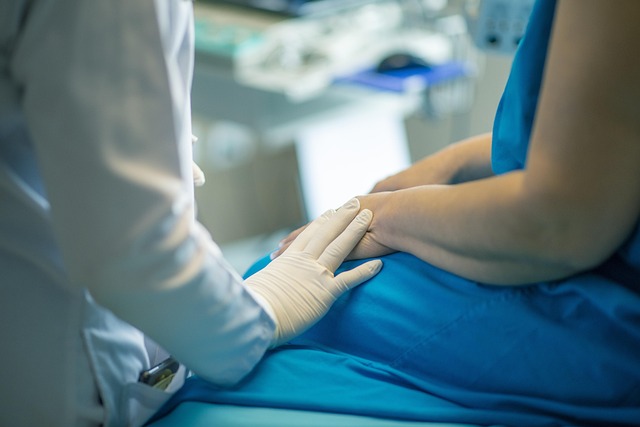Nose Job 101: Essential Guide to Rhinoplasty
Discover the ins and outs of rhinoplasty, the transformative surgical procedure that can enhance both form and function of your nose. From aesthetic improvements to breathing corrections, this comprehensive guide covers everything you need to know before considering a nose job. Learn about the surgical process, recovery expectations, and how to choose the right surgeon for your unique needs.

Rhinoplasty, colloquially known as a “nose job,” is a sophisticated surgical procedure that can dramatically alter the shape and functionality of your nose. Whether you’re contemplating this surgery for cosmetic enhancement or to address structural issues, it’s crucial to have a thorough understanding of the process, potential benefits, and what to anticipate.
Why Consider Rhinoplasty?
People opt for rhinoplasty for various reasons, including:
- Aesthetic enhancement: To modify the size, shape, or proportions of the nose
- Correcting birth defects: To address congenital nasal abnormalities
- Breathing improvement: To alleviate respiratory difficulties caused by structural irregularities
- Confidence boost: To enhance self-esteem and feel more at ease with one’s appearance
It’s important to note that the decision to undergo rhinoplasty is deeply personal and should be made after careful consideration and professional consultation.
The Surgical Procedure: What to Expect
Rhinoplasty is typically performed under general anesthesia and can last between one to three hours, depending on the complexity of the case. Surgeons generally employ one of two primary techniques:
- Closed rhinoplasty: Incisions are made inside the nostrils, leaving no visible external scarring
- Open rhinoplasty: An additional small incision is made across the columella, providing greater access to nasal structures
During the operation, the surgeon meticulously reshapes the nose’s bone, cartilage, and soft tissues to achieve the desired outcome. This may involve tissue removal, augmentation, or refinement of the nasal tip. The specific approach depends on the patient’s unique needs and goals.
Navigating the Recovery Process
Recovery from rhinoplasty is a gradual process that typically spans several weeks. Most patients can return to their normal routines within 1-2 weeks. Here’s a general timeline of what to expect:
- Immediate post-surgery: Expect some discomfort, swelling, and bruising. A splint will protect your nose.
- Week 1: Removal of splint and stitches. Initial results become visible.
- Weeks 2-4: Significant reduction in swelling and bruising. Gradual return to normal activities.
- Months 1-12: Continued refinement of nasal shape as final results emerge.
Adhering strictly to your surgeon’s post-operative instructions is crucial for optimal healing and results.
Selecting Your Rhinoplasty Surgeon
The choice of surgeon is paramount in achieving the best possible outcome. Consider these factors when making your selection:
- Board certification: Ensure the surgeon is certified by a reputable organization like the American Board of Plastic Surgery
- Specialization: Opt for a surgeon with extensive experience in facial plastic surgery, particularly rhinoplasty
- Portfolio review: Examine before-and-after photos to assess the surgeon’s aesthetic style
- Patient feedback: Read reviews and, if possible, speak with former patients
- Consultation experience: Schedule meetings with multiple surgeons to find the best fit for your needs and comfort level
Take your time in this decision-making process, as the surgeon’s expertise directly impacts your results.
Understanding Potential Risks and Complications
While serious complications are uncommon, it’s essential to be aware of potential risks associated with rhinoplasty:
- Infection
- Bleeding
- Adverse anesthesia reactions
- Unsatisfactory aesthetic results
- Breathing difficulties
- Altered sensation or numbness
- Scarring (particularly with open rhinoplasty)
- Potential need for revision surgery
Choosing a skilled surgeon and following all pre- and post-operative guidelines can help minimize these risks.
Cost Considerations for Rhinoplasty
The cost of rhinoplasty can vary significantly based on factors such as surgeon expertise, geographic location, and procedure complexity. Here’s a general overview of rhinoplasty costs in the United States:
| Provider Type | Average Cost Range | Inclusions |
|---|---|---|
| Board-Certified Plastic Surgeon | $5,000 - $15,000 | Surgeon’s fee, facility fee, anesthesia |
| Facial Plastic Surgeon | $6,000 - $20,000 | Surgeon’s fee, facility fee, anesthesia |
| ENT Surgeon (functional rhinoplasty) | $4,000 - $12,000 | Surgeon’s fee, facility fee, anesthesia |
Note: These figures are estimates and may change over time. Always conduct independent research before making financial commitments.
It’s important to note that cosmetic rhinoplasty is typically not covered by insurance. However, if the procedure is deemed medically necessary (e.g., to correct breathing issues), insurance may cover part or all of the cost.
Rhinoplasty is a complex, personalized surgical procedure that can significantly impact both appearance and quality of life. By thoroughly understanding the process, potential risks, and expected outcomes, you can make an informed decision about whether this procedure aligns with your goals. Always consult with a board-certified plastic surgeon to discuss your specific needs and expectations before proceeding with any surgical intervention.
This article is intended for informational purposes only and should not be considered medical advice. Please consult a qualified healthcare professional for personalized guidance and treatment options.






